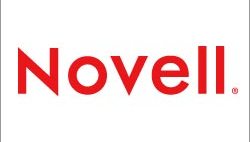Novell Adds Application Virtualization to Portfolio

Novell ZENworks Application Virtualization does a good job of virtualising software on Microsoft Windows desktop PCs. It is also a worthy competitor to Symantec Altiris SVS, Microsoft Application Virtualization and VMware ThinApp 4.
Novell ZENworks Application Virtualization (ZAV) makes short work of eliminating application conflicts on Windows desktops by isolating programs from the underlying operating system.
ZAV still allows applications to interact with each other to enhance user productivity, and the product is a worthy addition to Novell’s virtualization portfolio. IT managers who are looking to take the next step in reducing application deployment and operational costs should put ZAV on the list of application virtualization products to consider.
However, this is far from being an empty playing field, and IT managers shouldn’t shy away from playing vendors off one another to get the best deal. Symantec Altiris SVS (Software Virtualization Solution), Microsoft Application Virtualization and VMware ThinApp 4 are all vying for attention.
Symantec’s tool has been around for several years and has a small but active end-user community called Juice that is a good resource for SVS users. Microsoft Application Virtualization is based on what used to be SoftGrid from Softricity, and based on my recent test, IT managers will be tasked with significant packaging and set-up burdens to make App-V 4.5 work correctly. VMware ThinApp hit some snags during my testing as well, but it has a neat method for keeping remotely deployed virtualized apps up-to-date.
Although this category of products is called “application virtualization,” it might be more apt to call it OS virtualisation, because Novell’s ZAV – like its competitors – creates a sandbox of sorts on the desktop or laptop and isolates the application’s changes to files and registry from the operating system. This effectively separates applications from each other as well, essentially eliminating compatibility testing from the application deployment test plan.
During my test, I virtualized Mozilla’s Firefox browser (Version 3), WinZip and Microsoft Office 2003 Professional.
My Novell ZAV test environment consisted of a VMware Workstation installation composed of two Windows XP Service Pack 3 systems. One of the Windows XP systems was my clean build system on which I used Novell ZAV to prepare my test applications. The other system was my installation target.
The basic process I used for virtualizing Windows applications using Novell ZAV is exactly the same used with any other application packaging tool. Starting with a clean install of Windows and using equipment that closely approximates one’s installed hardware inventory, a desktop administrator uses Novell ZAV to take a snapshot of the registry, DLLs and other files on the clean system.